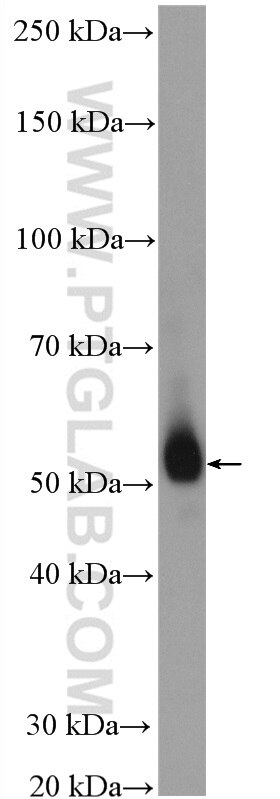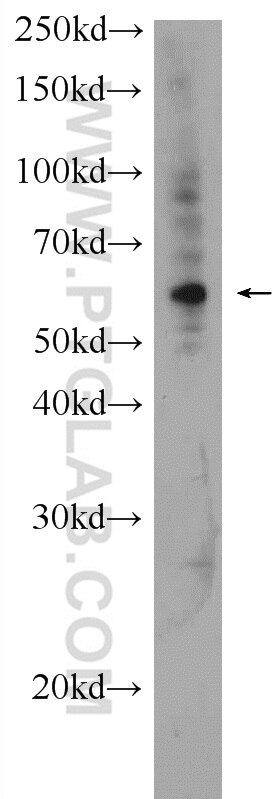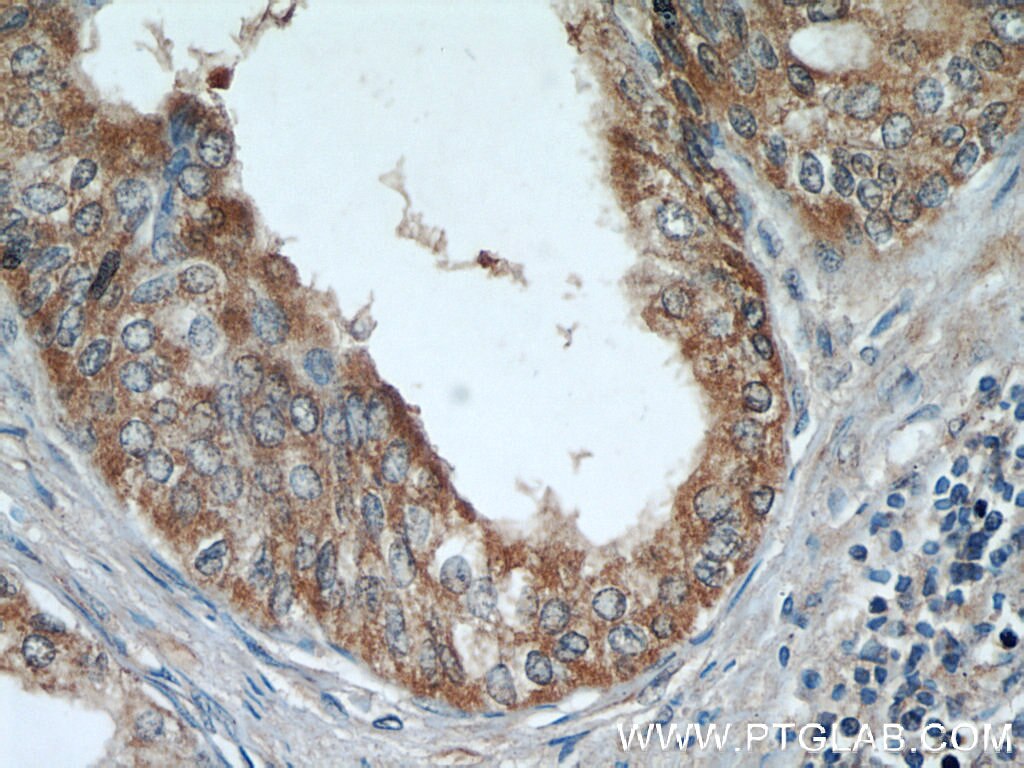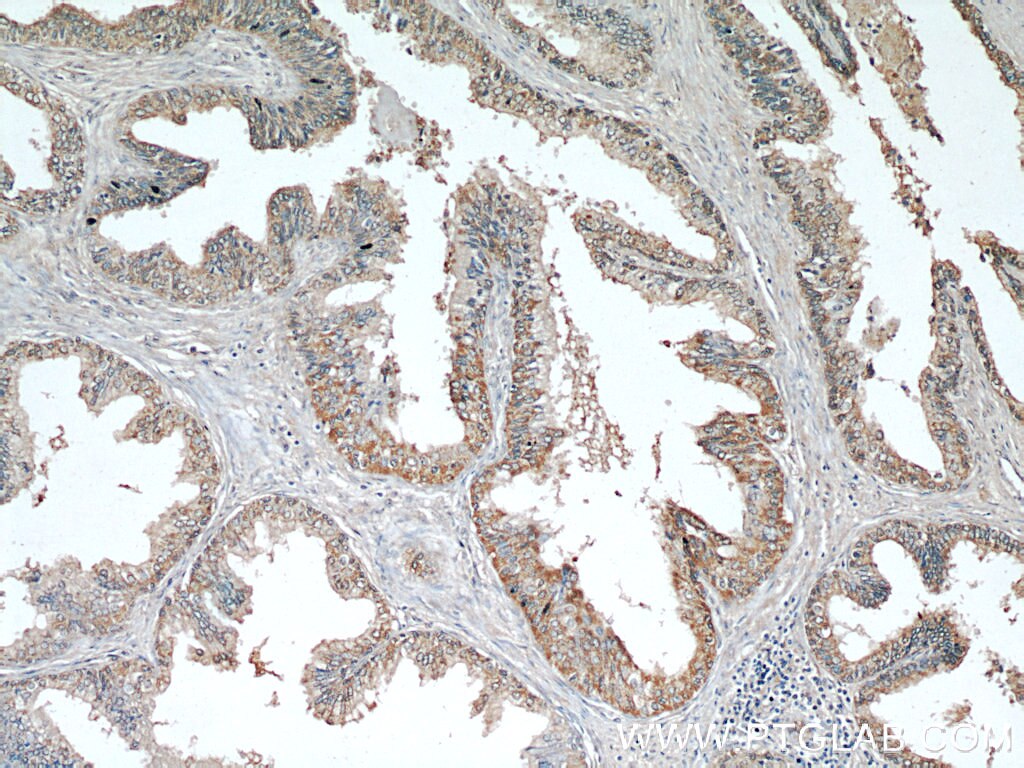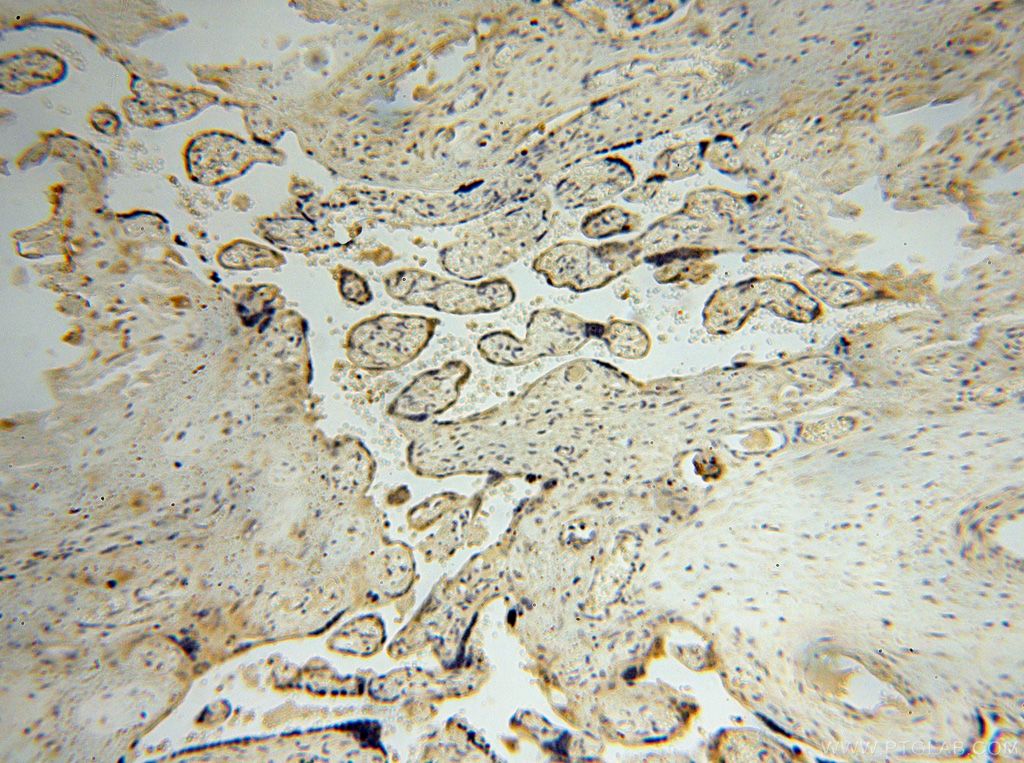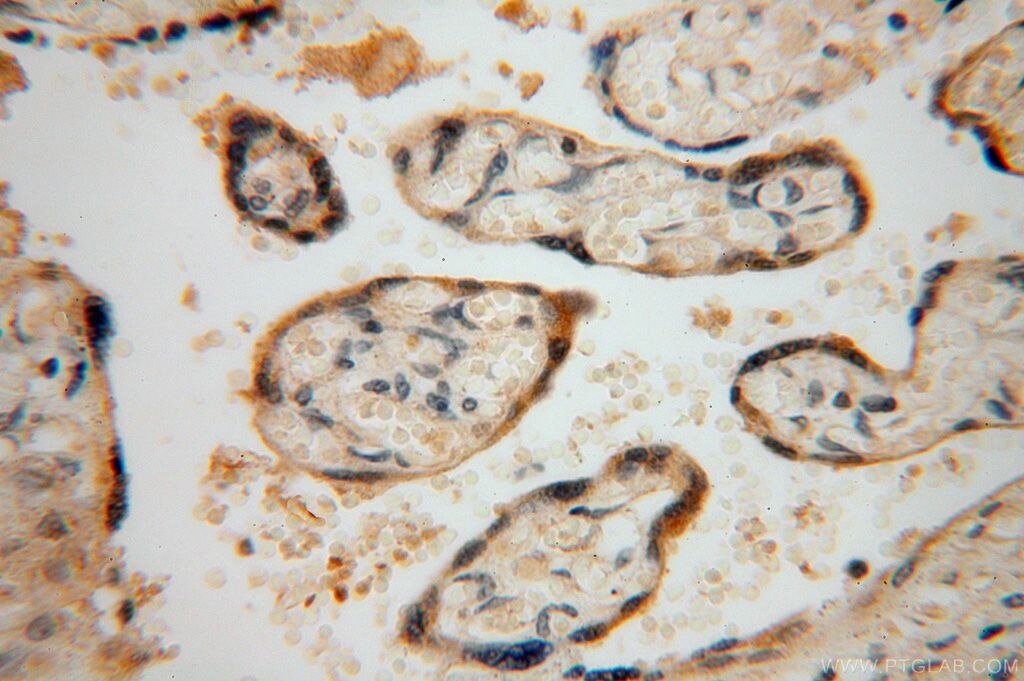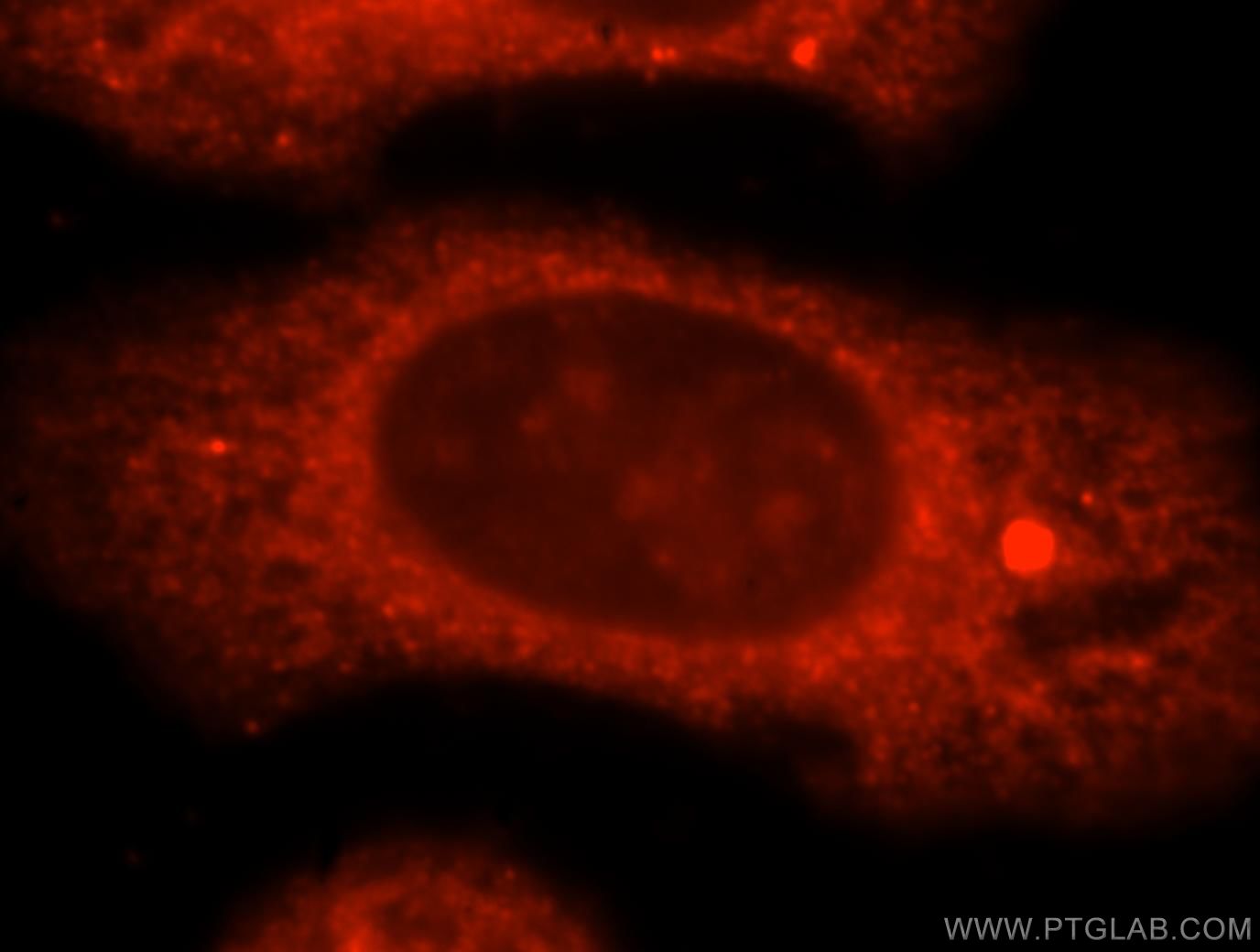Tested Applications
| Positive WB detected in | rat thymus tissue, mouse thymus tissue |
| Positive IHC detected in | human prostate hyperplasia tissue, human placenta tissue Note: suggested antigen retrieval with TE buffer pH 9.0; (*) Alternatively, antigen retrieval may be performed with citrate buffer pH 6.0 |
| Positive IF/ICC detected in | HepG2 cells |
Recommended dilution
| Application | Dilution |
|---|---|
| Western Blot (WB) | WB : 1:200-1:1000 |
| Immunohistochemistry (IHC) | IHC : 1:50-1:500 |
| Immunofluorescence (IF)/ICC | IF/ICC : 1:10-1:100 |
| It is recommended that this reagent should be titrated in each testing system to obtain optimal results. | |
| Sample-dependent, Check data in validation data gallery. | |
Published Applications
| KD/KO | See 3 publications below |
| WB | See 12 publications below |
| IHC | See 4 publications below |
Product Information
17003-1-AP targets ODC1 in WB, IHC, IF/ICC, ELISA applications and shows reactivity with human, mouse, rat samples.
| Tested Reactivity | human, mouse, rat |
| Cited Reactivity | human, mouse, pig |
| Host / Isotype | Rabbit / IgG |
| Class | Polyclonal |
| Type | Antibody |
| Immunogen |
CatNo: Ag10699 Product name: Recombinant human ODC1 protein Source: e coli.-derived, PGEX-4T Tag: GST Domain: 121-461 aa of BC025296 Sequence: KYAANNGVQMMTFDSEVELMKVARAHPKAKLVLRIATDDSKAVCRLSVKFGATLRTSRLLLERAKELNIDVVGVSFHVGSGCTDPETFVQAISDARCVFDMGAEVGFSMYLLDIGGGFPGSEDVKLKFEEITGVINPALDKYFPSDSGVRIIAEPGRYYVASAFTLAVNIIAKKIVLKEQTGSDDEDESSEQTFMYYVNDGVYGSFNCILYDHAHVKPLLQKRPKPDEKYYSSSIWGPTCDGLDRIVERCDLPEMHVGDWMLFENMGAYTVAAASTFNGFQRPTIYYVMSGPAWQLMQQFQNPDFPPEVEEQDASTLPVSCAWESGMKRHRAACASASINV Predict reactive species |
| Full Name | ornithine decarboxylase 1 |
| Calculated Molecular Weight | 461 aa, 51 kDa |
| Observed Molecular Weight | 51 kDa |
| GenBank Accession Number | BC025296 |
| Gene Symbol | ODC1 |
| Gene ID (NCBI) | 4953 |
| Conjugate | Unconjugated |
| Form | Liquid |
| Purification Method | Antigen affinity purification |
| UNIPROT ID | P11926 |
| Storage Buffer | PBS with 0.02% sodium azide and 50% glycerol, pH 7.3. |
| Storage Conditions | Store at -20°C. Stable for one year after shipment. Aliquoting is unnecessary for -20oC storage. 20ul sizes contain 0.1% BSA. |
Background Information
Ornithine decarboxylase (ODC) is also named as ODC1 and belongs to the Orn/Lys/Arg decarboxylase class-II family. It catalyzes the conversion of ornithine to putrescine, the first step and a major site of regulation of polyamine biosynthesis. The level of ODC is known to be controlled at several sites, namely transcription, translation, and enzyme degradation. Polyamines can stimulate the degradation of ODC as a type of negative feedback control (PMID:8486633). This protein can be phosphorylated in vivo (PMID:8798774). ODC1 can form a homodimer and only the dimer is catalytically active, as the active sites are constructed of residues from both monomers (PMID: 10623504). The molecular mass of ODC1 is 51 kDa, and the homodimer is 106 kDa.
Publications
| Species | Application | Title |
|---|---|---|
NPJ Precis Oncol Integrated multiomics analysis of hepatoblastoma unravels its heterogeneity and provides novel druggable targets | ||
NPJ Precis Oncol Integrated multiomics analysis of hepatoblastoma unravels its heterogeneity and provides novel druggable targets.
| ||
Am J Physiol Cell Physiol The Regulation of Polyamine Pathway Proteins in Models of Skeletal Muscle Hypertrophy and Atrophy - a potential role for mTORC1. | ||
Life Sci Ornithine is a key mediator in hyperphosphatemia-mediated human umbilical vein endothelial cell apoptosis: Insights gained from metabolomics. | ||
Arch Pharm Res Spermidine rescues proximal tubular cells from oxidative stress and necrosis after ischemic acute kidney injury.
| ||

